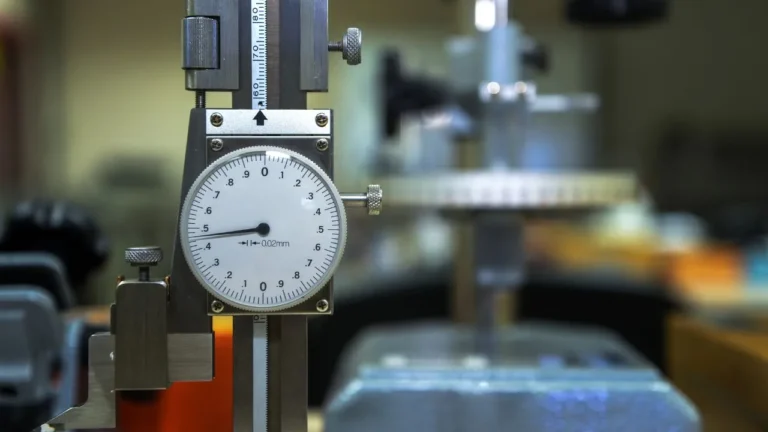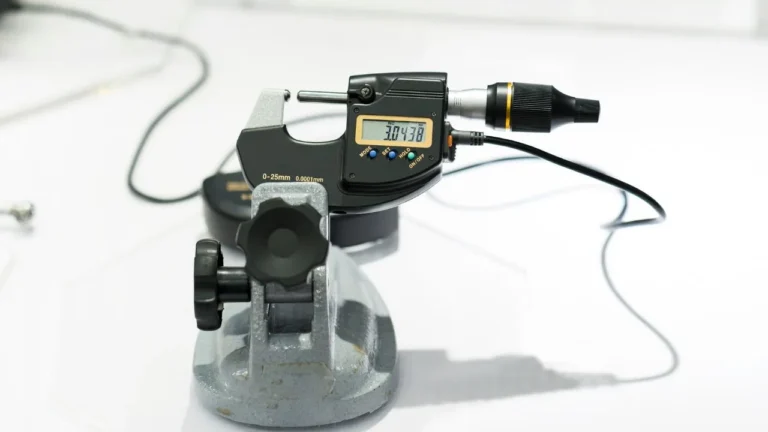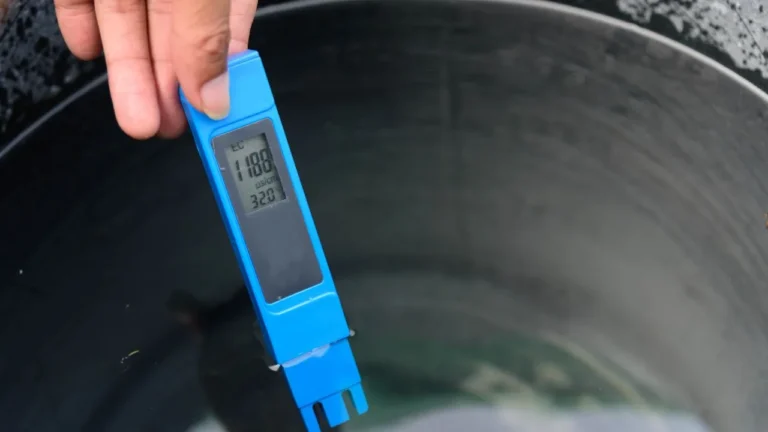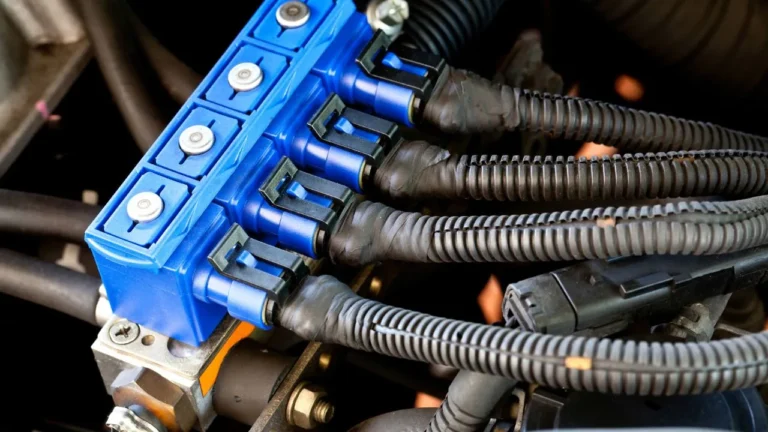Process of NABL Calibration in Baddi, Himachal Pradesh

Introduction
Explain what NABL calibration is and why it is important
NABL calibration refers to the calibration process done by laboratories accredited by NABL. NABL stands for National Accreditation Board for Testing and Calibration Laboratories. In NABL calibration, measuring instruments are checked against traceable standards. Their accuracy is certified by the NABL accredited lab. NABL calibration is crucial for ensuring precise measurements. Inaccurate measurements can lead to defective products or services. They can violate industry standards and compromise safety. Many sectors require NABL calibration. These include manufacturing, pharmaceuticals, automotive, aerospace and more. Common equipment sent for NABL calibration are weighing balances, thermometers, pressure gauges etc. Regular NABL calibration maintains reliability of measurements. It ultimately helps maintain quality and compliance.
Read also ***The Impact of NABL Calibration on Roorkee’s Industrial Development***
Highlight the need for NABL calibration services in Baddi, Himachal Pradesh
Baddi is an industrial hub in Himachal Pradesh. Many manufacturing units are located here. NABL calibration services are essential for these industries. Calibration ensures accuracy of measurements. This is critical for maintaining quality standards. Improper measurements can lead to defective products. They can also compromise safety and environmental norms. Industries in Baddi must regularly calibrate equipment. This includes weighing scales, pressure gauges, thermometers etc. NABL accredited labs follow strict guidelines. Their calibration certificates are widely accepted. However, there is a shortage of NABL approved labs in Baddi. More NABL calibration services are needed locally. This will make it easier for industries to get timely calibrations. It will help them adhere to quality requirements.
Understanding NABL Calibration

Define NABL calibration and its purpose
NABL stands for National Accreditation Board for Testing and Calibration Laboratories. NABL calibration is a process of ensuring accuracy. It checks and certifies measuring equipment and instruments. Calibration compares readings against a standard. This standard is traceable to national or international standards. NABL calibration ensures your measurements are accurate and reliable. It is done by NABL accredited laboratories. These follow strict quality standards set by NABL. NABL calibration is crucial for industries. It maintains quality and safety across sectors. Common items sent for NABL calibration include weighing balances, thermometers, sensors and more. Regular NABL calibration is recommended to maintain precision.
Explain how NABL accreditation ensures reliable measurements
NABL, or National Accreditation Board for Testing and Calibration Laboratories, accredits labs for calibration services. NABL calibration happens at these accredited facilities. NABL has strict requirements for accreditation. Labs must follow well-defined procedures and standards. Their equipment has to be regularly calibrated. Calibration ensures traceability to national or international measurement standards. NABL audits and assesses labs periodically. This ensures continued compliance with quality norms. As a result, NABL accredited labs provide reliable calibration services. Measurements done by these labs are accurate and precise. Their NABL calibration certificates are widely accepted. Industries across sectors rely on NABL calibration. It helps them maintain product quality and user safety. NABL accreditation is thus crucial for ensuring reliable measurements.
Read also ***NABL Calibration’s Contribution to Bhagwanpur Industries***
Getting Ready for NABL Calibration in Baddi
Discuss the initial steps involved in preparing for NABL calibration
If you are getting ready for NABL calibration in Baddi, there are some initial steps to follow. First, make a list of all equipment that needs calibration. This includes weighing balances, thermometers, pressure gauges etc. Check if any calibration is overdue. Next, identify an NABL accredited laboratory nearby. You can search online for NABL approved labs in Baddi. Check if they can calibrate your specific equipment. Once you find a suitable lab, prepare your equipment. Clean it thoroughly before sending for NABL calibration. Document any issues or errors you have noticed. Provide this information to the lab upfront. Having equipment ready will ensure smooth calibration. It will also help get accurate calibration results from the NABL approved lab.
Importance of choosing a trusted and accredited calibration lab
Choosing the right lab is crucial when getting ready for NABL calibration in Baddi. You need a trusted and accredited calibration facility. NABL accreditation ensures reliable calibration services. An accredited lab like Instrumaster calibration Lab Private Limited follows strict NABL guidelines. This NABL accredited lab is established in Haridwar. It has trained personnel and calibrated equipment traceable to standards. NABL audits ensure continued compliance at such accredited labs. Their NABL calibration certificates hold weight across industries. Opting for an accredited lab may cost more, but assures accuracy. Reputed NABL labs also handle equipment with care during calibration. So when preparing for NABL calibration in Baddi, choose an experienced and NABL accredited facility. This ensures precise and acceptable calibration results.
Calibration of Equipment and Instruments

Process of calibrating various equipment and instruments
NABL calibration follows a systematic process for different equipment. First, the equipment is visually inspected for any defects. Its specifications and calibration requirements are noted. Calibration standards are selected as per the instrument type. These standards must be traceable to national or international measurement units. The equipment is then tested against the reference standards. Its readings are compared and any deviations are recorded. If readings are within acceptable limits, the equipment is calibrated. Adjustment or repairs are done if required. Finally, the calibrated equipment is stamped and certified by the NABL accredited lab. A detailed calibration certificate with traceability is issued. This NABL calibration process ensures measurement accuracy and reliability. Common equipment sent for NABL calibration includes weighing balances, thermometers, pressure gauges and more.
Stress the significance of following standardized procedures and using calibrated reference standards
Proper calibration procedures are vital for reliable NABL calibration results. Standardized methods must be followed strictly. Documented processes ensure consistency and accuracy. Use of calibrated reference standards is equally important. These standards act as benchmarks for measurements. They are traceable to national or international units. Without traceable standards, calibration has no validity. Reference standards themselves require periodic calibration. This maintains their accuracy over time. NABL accredited labs have robust quality systems in place. They follow approved procedures and use traceable standards. Technicians are also trained in calibration techniques. Adherence to standardized calibration processes is audited regularly. This way, NABL calibration provides dependable measurement data. It enables industries to maintain quality and compliance.
Read also ***Industrial Growth: NABL Calibration’s Impact on Rudrapur’s Industries***
Documentation and Traceability
Explain the importance of maintaining accurate records and documentation throughout the calibration process.
Accurate record-keeping is crucial during NABL calibration. Detailed documentation provides traceability and accountability. It starts with recording equipment details before calibration. This includes make, model, serial number and calibration status. During NABL calibration, all test readings are noted methodically. Any adjustments or repairs done are documented too. After calibration, the NABL accredited lab issues a certificate. This certificate contains all calibration data and traceability information. Maintaining these records is a NABL requirement. It ensures the integrity of calibration results. Complete documentation also helps in future analysis. It allows tracking of measurement variations over time. Auditors from NABL check these records during lab assessments. Hence, meticulous documentation at every step is vital for a valid NABL calibration process.
Describe how traceability ensures the credibility of calibration results
Traceability is the backbone of credible NABL calibration results. It provides an unbroken chain of measurements. Traceability links the calibration standards to national or international reference standards. These references are maintained by premier institutes. They represent the true value of a measurement unit.
During NABL calibration, equipment readings are compared against traceable standards. Any deviations are calibrated back to the reference value. This traceability ensures measurements conform to accepted benchmarks. It allows results to be reproduced across different calibration labs.
NABL accredited labs maintain meticulous traceability records. Their calibration certificates mention the traceability route and sources. This documented traceability validates the calibration process. It lends credibility to the NABL calibration results. Industries across sectors rely on this credibility for quality assurance. Traceability is thus indispensable for accurate and reliable measurements through NABL calibration.
Read also ***No 1 Quality Calibration and Instrumentation: Everything You Need to Know***
Ensuring Quality and Compliance

Discuss the quality assurance measures implemented during NABL calibration
NABL calibration involves stringent quality checks at every stage. This ensures accurate and dependable calibration results. Quality starts with the calibration laboratory itself. NABL grants accreditation only after rigorous assessments. Labs must have proper infrastructure, equipment, and qualified staff.
During NABL calibration, approved procedures are followed meticulously. Calibrated reference standards with traceability are used. Environmental conditions like temperature are monitored. Measurements are repeated to check consistency. Any defects in instruments are addressed through adjustments or repairs.
NABL accredited labs also have regular quality audits. Their calibration processes, documentation and traceability are thoroughly reviewed. Proficiency tests evaluate staff competence periodically. Robust quality systems minimize errors and variations.
Such comprehensive quality assurance gives confidence in NABL calibration data. It allows industries to demonstrate compliance to standards. Reliable measurements from NABL calibration uphold product quality and safety norms.
Highlight the adherence to national and international standards for regulatory compliance
NABL calibration helps industries meet regulatory requirements. It follows well-defined national and international measurement standards. Adherence to these standards is mandatory for compliance.
NABL accredited labs use reference standards traceable to premier institutes. In India, this includes the National Physical Laboratory (NPL). Globally, traceability goes back to the International Bureau of Weights and Measures (BIPM). These institutes maintain the precise definitions of measurement units.
Equipment calibrated as per these standards provides reliable data. Industries can prove conformity to quality norms using NABL calibration certificates. Sectors like pharmaceuticals, food, automotive, etc. have stringent calibration norms. NABL calibration fulfills these regulatory needs through standardized processes.
Furthermore, NABL operates as per ISO/IEC 17025 standards. This international standard governs calibration and testing competence. NABL’s accreditation program is also recognized globally.
By aligning with national and international standards, NABL calibration ensures measurements are accurate and acceptable. This calibration credibility underpins regulatory compliance across industries.
Analysis and Reporting
Outline the evaluation and analysis of calibration results
Proper evaluation of NABL calibration results is essential. The process starts with checking if readings fall within acceptable limits. These limits are defined based on equipment specifications and calibration standards. Any deviations beyond permissible errors are flagged.
The calibration data is then studied for trends or patterns. Consistent variations may indicate underlying issues with the instrument. Comparing historical records helps identify potential causes like wear, environmental factors, etc.
Detailed analysis looks at measurement uncertainties as well. NABL accredited labs calculate these using standardized methods. Uncertainty stems from various sources like standards, environment, procedure repeatability etc. Understanding uncertainties gives a complete picture of measurement reliability.
Based on the evaluation, corrective actions are recommended. These could involve equipment adjustments, process improvements or replacement of components. Comprehensive data analysis after NABL calibration ensures proactive maintenance of measurement capabilities.
Explain how calibration certificates and reports are generated for clients
After the NABL calibration process, clients receive detailed certificates and reports. These documents contain comprehensive calibration data and findings. The certificate typically includes basic equipment details like make, model and serial number. It lists the calibration standards used along with their traceability sources.
The main section outlines the actual calibration results. This covers readings before and after calibration adjustments. Any deviations or measurement errors are clearly stated. The uncertainty calculations for the calibration process are also provided.
Additionally, the certificate mentions the environmental conditions during calibration. The validity period for which calibration holds is specified. Remarks on instrument status, repairs done, and other relevant information are included.
All data is presented in a standard format specified by NABL. Calibration certificates from NABL accredited labs have unique identification numbers for traceability. These documents serve as evidence of instrument accuracy. They enable clients to demonstrate compliance and maintain quality standards.
Read also ***No1 Economy Instrument Calibration at RSS Solution Haridwar***
Continuous Improvement and Recalibration

Highlight the need for continuous improvement and periodic recalibration to maintain accuracy
NABL calibration is not a one-time event. It requires continuous efforts to sustain measurement accuracy over time. Even after calibration, instruments can drift from their calibrated state. This is due to factors like wear and tear, environmental conditions, or improper handling.
To counter this, regular recalibration at defined intervals is crucial. NABL accredited labs recommend ideal recalibration periods based on instrument type and usage. Timely recalibration ensures measurements remain within acceptable limits.
Moreover, NABL calibration should drive continuous improvement. Calibration data analysis provides insights into instrument performance. Any recurring issues or errors can be investigated and addressed. This could involve upgrading equipment, enhancing procedures, or personnel training.
NABL’s own requirements also evolve regularly. Adopting the latest NABL standards and best practices is vital. Continuous improvement in line with NABL guidelines upholds the reliability of calibration services.
Through periodic recalibration and constant refinement, industries can have confidence in their measurement capabilities. This underpins product quality, safety and compliance over the long run.
Discuss the benefits of regular calibration for businesses in Baddi
Regular NABL calibration offers numerous advantages for businesses operating in Baddi. This industrial hub has manufacturing units across sectors like pharmaceuticals, food processing, and automotive components. Precise measurements are critical for maintaining quality and adhering to standards in these industries.
By getting equipment calibrated periodically at NABL accredited labs, companies can ensure accuracy. NABL calibration certificates validate that instruments conform to reference standards. This prevents product defects or failures arising from measurement errors.
Regular NABL calibration also enables regulatory compliance. Many industries require calibration as per guidelines laid down by authorities like FDA, FSSAI, BIS etc. With proper NABL calibration records, businesses can demonstrate adherence to these norms during audits or inspections.
Furthermore, calibrated equipment has better operational efficiency. It minimizes process variations and wastage of raw materials. NABL calibration promotes better resource utilization and productivity for businesses in Baddi.
Facilities that prioritize regular NABL calibration instill confidence in their products and services. This boosts their brand reputation and competitiveness in the market.
FAQs on Process of NABL Calibration in Baddi, Himachal Pradesh
What is NABL calibration?
NABL calibration refers to the calibration of measuring instruments done by laboratories accredited by the National Accreditation Board for Testing and Calibration Laboratories (NABL). It ensures the accuracy of measurements against traceable standards.
Why is NABL calibration important?
NABL calibration is crucial for ensuring precise measurements, which are essential for maintaining quality standards, safety, and regulatory compliance across various industries.
What is the need for NABL calibration services in Baddi, Himachal Pradesh?
Baddi is an industrial hub with many manufacturing units that require regular calibration of equipment such as weighing scales, pressure gauges, and thermometers. However, there is a shortage of NABL-approved labs in Baddi, necessitating the need for more local NABL calibration services.
How does NABL accreditation ensure reliable measurements?
NABL accreditation involves strict requirements, including adherence to well-defined procedures and standards, the use of regularly calibrated equipment, and periodic audits and assessments to ensure continued compliance with quality norms.
What are the initial steps involved in preparing for NABL calibration?
The initial steps include making a list of equipment that needs calibration, identifying a suitable NABL-accredited laboratory, cleaning the equipment thoroughly, and documenting any issues or errors.
Why is it important to choose a trusted and accredited calibration lab?
Choosing a trusted and NABL-accredited calibration lab ensures reliable calibration services, as these labs follow strict NABL guidelines, have trained personnel and calibrated equipment traceable to standards, and undergo regular audits.
What is the step-by-step process of calibrating various equipment and instruments?
The process involves visual inspection, noting specifications and requirements, selecting traceable calibration standards, testing against reference standards, recording deviations, making adjustments or repairs if needed, and finally stamping and certifying the calibrated equipment.
Why is it important to follow standardized procedures and use calibrated reference standards?
Following standardized procedures ensures consistency and accuracy, while using calibrated reference standards traceable to national or international units is crucial for valid and reliable calibration results.
Why is maintaining accurate records and documentation important during the calibration process?
Accurate record-keeping and documentation provide traceability, accountability, and integrity of calibration results, as well as enable future analysis and facilitate audits.
How does traceability ensure the credibility of calibration results?
Traceability links the calibration standards to national or international reference standards, ensuring measurements conform to accepted benchmarks and allowing results to be reproduced across different calibration labs.
What quality assurance measures are implemented during NABL calibration?
Quality assurance measures include rigorous assessments of labs, adherence to approved procedures, use of traceable reference standards, environmental monitoring, measurement repetitions, adjustments or repairs, regular quality audits, and proficiency tests for staff.
How does NABL calibration help in adhering to national and international standards for regulatory compliance?
NABL calibration follows well-defined national and international measurement standards, such as those maintained by the National Physical Laboratory (NPL) in India and the International Bureau of Weights and Measures (BIPM), ensuring compliance with regulatory requirements.
How are calibration results evaluated and analyzed?
Calibration results are evaluated by checking if readings fall within acceptable limits, studying trends or patterns, identifying potential causes of deviations, and calculating measurement uncertainties using standardized methods.
What information is included in calibration certificates and reports generated for clients?
Calibration certificates and reports include equipment details, calibration standards used with traceability sources, calibration results (before and after adjustments), deviations or errors, uncertainty calculations, environmental conditions, validity period, instrument status, repairs done, and other relevant information.
Why is continuous improvement and periodic recalibration necessary?
Continuous improvement and periodic recalibration are necessary to maintain measurement accuracy over time, as instruments can drift from their calibrated state due to factors like wear and tear, environmental conditions, or improper handling. Regular recalibration ensures measurements remain within acceptable limits.
What are the benefits of regular calibration for businesses in Baddi?
Regular NABL calibration helps businesses in Baddi ensure accuracy, prevent product defects or failures, enable regulatory compliance, improve operational efficiency and resource utilization, minimize process variations and wastage, and instill confidence in their products and services.
What types of equipment commonly require NABL calibration?
Common equipment that requires NABL calibration includes weighing balances, thermometers, pressure gauges, sensors, and various other measuring instruments used across industries.
How often should equipment be recalibrated?
The ideal recalibration periods depend on the instrument type and usage, and are recommended by NABL-accredited labs based on their expertise and guidelines.
What is the role of NABL in the calibration process?
NABL grants accreditation to calibration laboratories after rigorous assessments, sets guidelines and standards for calibration procedures, conducts audits and assessments to ensure continued compliance, and operates in accordance with international standards like ISO/IEC 17025.
What industries commonly require NABL calibration services?
Industries that commonly require NABL calibration services include manufacturing, pharmaceuticals, food processing, automotive, aerospace, and any sector where precise measurements are critical for maintaining quality standards, safety, and regulatory compliance.
Read also –
NABL Calibration Services in Pantnagar
NABL Calibration Services in Rishikesh
NABL Calibration Services for Industrial Instruments in Dehradun Selaqui
NABL Calibration Services for Partapur Industries, Meerut
The Impact of NABL Calibration on Roorkee’s Industrial Development
Industrial Growth: NABL Calibration’s Impact on Rudrapur’s Industries
INSTRUMENT CALIBRATION AT RSS SOLUTION HARIDWAR
NABL CALIBRATION SERVICES IN HARIDWAR: RSS SOLUTION
No 1 Quality Calibration and Instrumentation: Everything You Need to Know